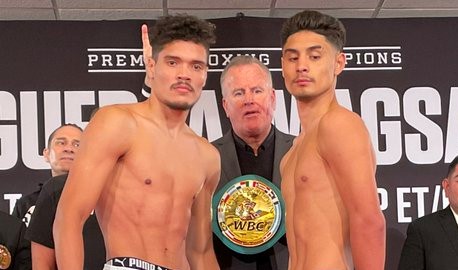By Barry Lindenman
The term “damage control” is a common phrase that describes the actions needed to deal with any problem that may jeopardize an endeavor. More commonly, it has frequently been adopted for use in politics and the media to describe a need to suppress information or employ spin doctors to represent a counter response to a particular situation.
The term “damage control” can also be applied to judging an MMA bout as well. The only difference being that the term simply needs to be split into its two components: damage and control. In its most simplistic application, judging and scoring an MMA round is all about evaluating these two variables: (1) damage and (2) control.
In my mind, the term “damage” covers all the various types of strikes (kicks, punches, etc.) and the term “control” covers all the other “non-striking” components of the sport (takedowns, throws, holds, ground game, etc.). Breaking down the MMA scoring criteria into these simplistic terms is the easy part. The harder part is weighing the effect that these two components have on each of the fighters so that what happened inside the cage can accurately be reflected outside the cage on the judges’ scorecards.
Before I get into the specific challenges that MMA judges face when scoring a round, I think it needs to be made clear that there are differing perspectives on viewing the action in an MMA fight, depending on the particular spectator involved. Here are the five differing viewpoints that exist when watching an MMA fight:
The live audience
The fighter’s respective corners
The television commentators
The television viewing audience
The judges who actually score the fight
Each of these different spectator groups can have a completely different take on the action that they see because of their different loyalties, biases, perspectives or jobs that they are responsible for. Clearly, of all of these, the three judges represent the smallest group but can have the most impact on the outcome of a fight. That’s why judges’ actions and opinions so often are viewed under a microscope and why they receive such scrutiny.
The simplistic view of scoring an MMA round from a judge’s perspective in terms of damage and/or control starts to get more complicated (and potentially controversial) when a round incorporates amounts of both of these elements AND they originate from different fighters. In other words, say Fighter A is landing some effective strikes in the round, but Fighter B is utilizing his superior grappling skills and controlling the action whenever not being punched or kicked by Fighter A. This is the challenge that judges have to face on a regular basis and use their experience, training and keen observation to determine who deserves to win the round: the fighter who landed the more effective strikes or the fighter who controlled the action through his or her effective ground game. If both of these elements are essentially equal in the mind of the judge, he or she must then try and evaluate and score the round based on some of the “secondary” scoring criteria (i.e. cage control, effective aggression and defense). Whenever the winner of a round is not so cut and dry and not so obvious to all parties watching it, that is when the different audiences observing the action can have differing opinions about who actually won the round.
The crowd watching the fight live and in person is starved for action and excitement and usually sees the winner of a close round as who was “winning” as the round ended. They can get caught up in the excitement of the live event and forget what may have happened earlier in the round that could sway a judge’s opinion. It’s obvious that each fighter’s respective corner men think that their fighter should be declared the winner of any close rounds simply by nature of their affiliation with their fighter. Television commentators, as representatives of the network that they broadcast from, may have their own prejudices as to which fighter they may favor based on previous friendships or other past relationships with them (i.e. endorsement deals, etc.). The audience viewing at home can also get caught up in the excitement of a good fight (i.e. a close round) and also may be limited by the inadequate two dimensional view that a television provides. Finally, we come to the judges. Of all the “thousands in attendance” watching the fight live and the “millions watching on TV,” these are the only three people who are actually trained to watch and evaluate a round based on the agreed upon scoring criteria as established by the MMA establishment. They should not be biased towards any particular fighter or fighting style. They should not be “rooting” for one fighter over another. With literally the best seats in the house, their job is only to focus their attention on the action that they observe and translate their evaluations numerically onto their scorecards. Simple? Sometimes. Complex? Sometimes.
One thing that the public needs to be reminded of is that MMA judges don’t score fights: we judge fights by scoring rounds. What exactly is meant by that is that each five minute block of time is viewed and scored independently of the others. Only in that way can each round be scored in an unbiased, objective and fair way. The concept of judging an MMA rounds in terms of “damage” and “control” is a simple exercise. The explanation of what exactly defines “damage” and “control” and the effect that each of these has on a judge’s evaluation and scoring of a round is the complex part.
Barry Lindenman can be reached at [email protected]


















